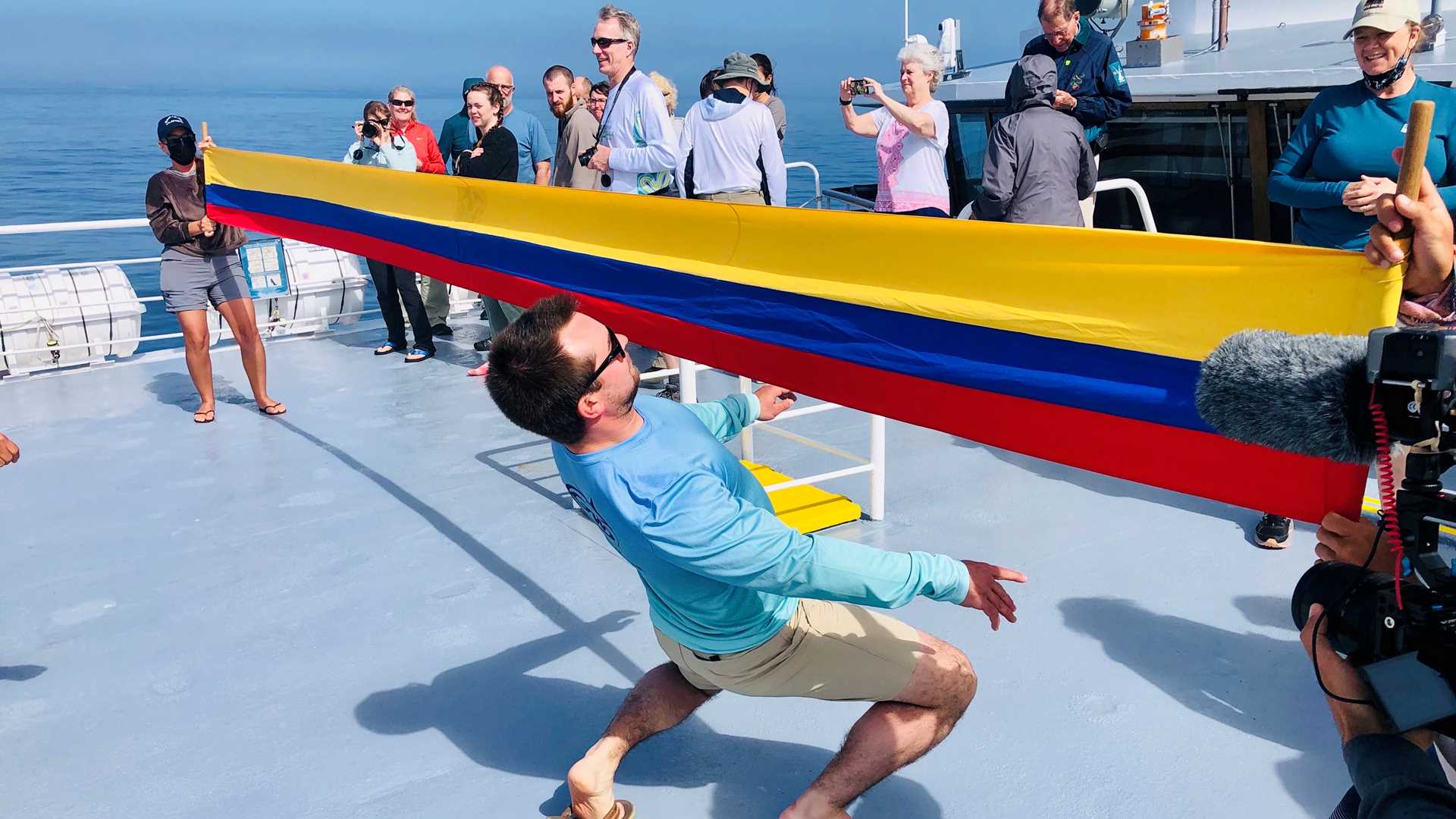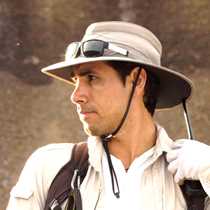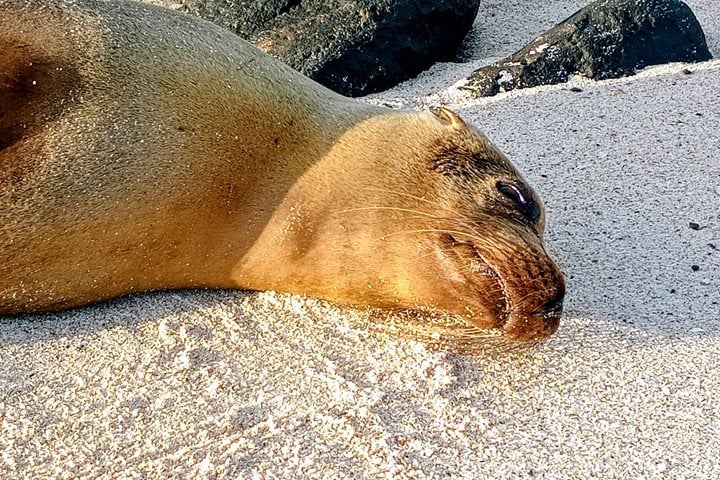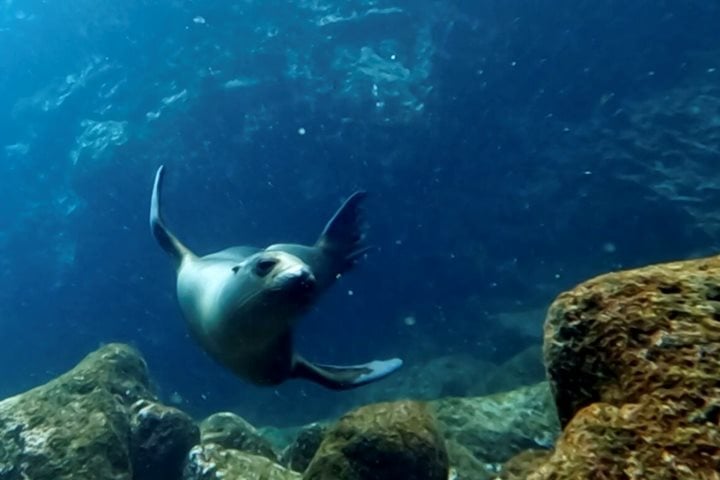As National Geographic Islander navigated around the north end of Isabela Island early in the morning, we observed several common dolphins from the top deck. Then, one of our guests spotted a pod of pilot whales logging at the surface. We were able to watch them and hear them for they were very close to the ship. All this happened before breakfast! Later, we headed to the bow of the ship to celebrate with our guests as we crossed the equator. As soon as we arrived to the anchorage site, we prepared to depart for a coastal exploration. Later, we looked for sea turtles as we snorkeled in a secluded cove.
In the afternoon, we hiked on Punta Espinoza, a site to the northwest of Fernandina. We enjoyed exploring this pristine volcanic landscape as we walked amongst sea lions and watched sea turtles by the shore.







